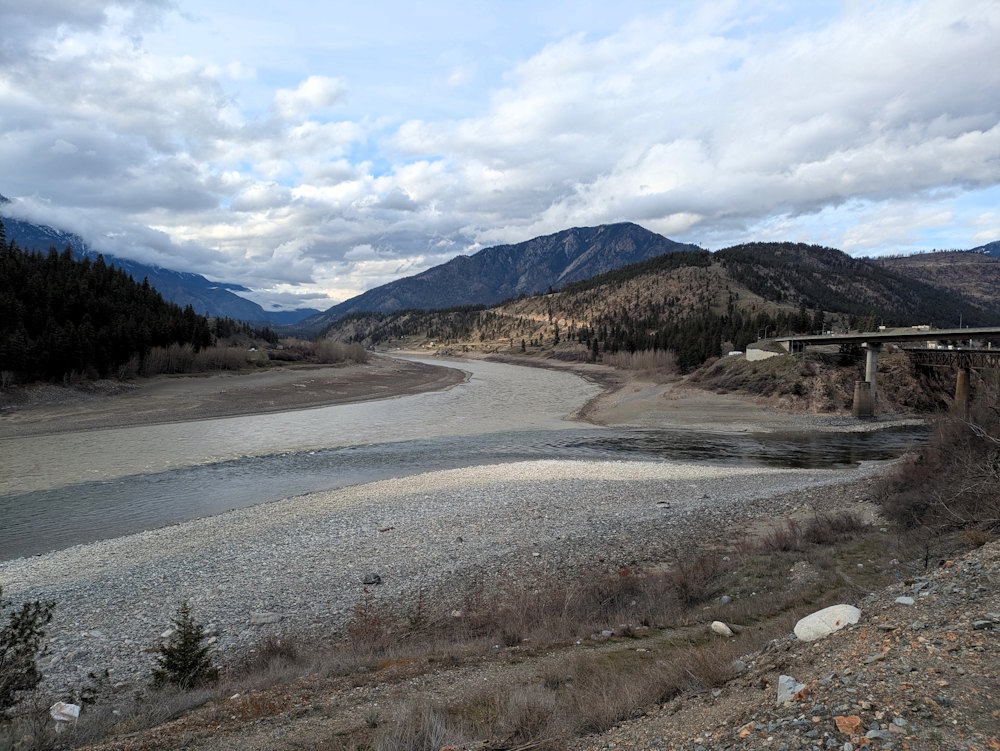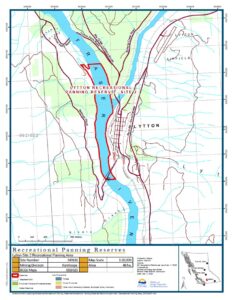Lytton, British Columbia is home to two public panning reserves. One is right in town and the other is six kilometers to the north. Both are on the Fraser River, which any fan of Dan Hurd knows, has gold everywhere.
The reserve in town, known as Lytton Recreational Panning Reserve Site 2, encompasses a two kilometer stretch of the Fraser roughly centered around the confluence of the Thompson River. We’ve panned it twice thus far and will do so again. Here’s what we’ve learned.
Everyone is aware of the catastrophic wildfire that destroyed Lytton in the summer of 2021. You really can’t appreciate the destruction until you’ve been there and seen the gridded streets of town now completely empty. Rebuilding has begun but it is a slow process.
Prior to our first visit, I wanted to ensure the panning reserve was still open and accessible. I didn’t want to intrude on a traumatized community and there were some conflicting comments on social media outlets as to whether the reserve was still open.
Somewhat to my surprise, Lytton’s mayor and council remain active and can be found online. I sent them a message asking if the panning reserve remained open and received a response shortly after confirming it was.
We first visited Lytton Recreational Panning Reserve Site 2 in late July of 2024. With minimal previous experience at these panning reserves, we arrived not knowing what to expect. Or what to do, even. And my 2D brain was showing.
I’d reviewed the layout of Lytton and the panning reserve multiple times on Google Maps. The official government map of the reserve shows that it lies immediately next to the village core. Never once did it dawn on me that “next to” does not necessarily equate to “level with.”
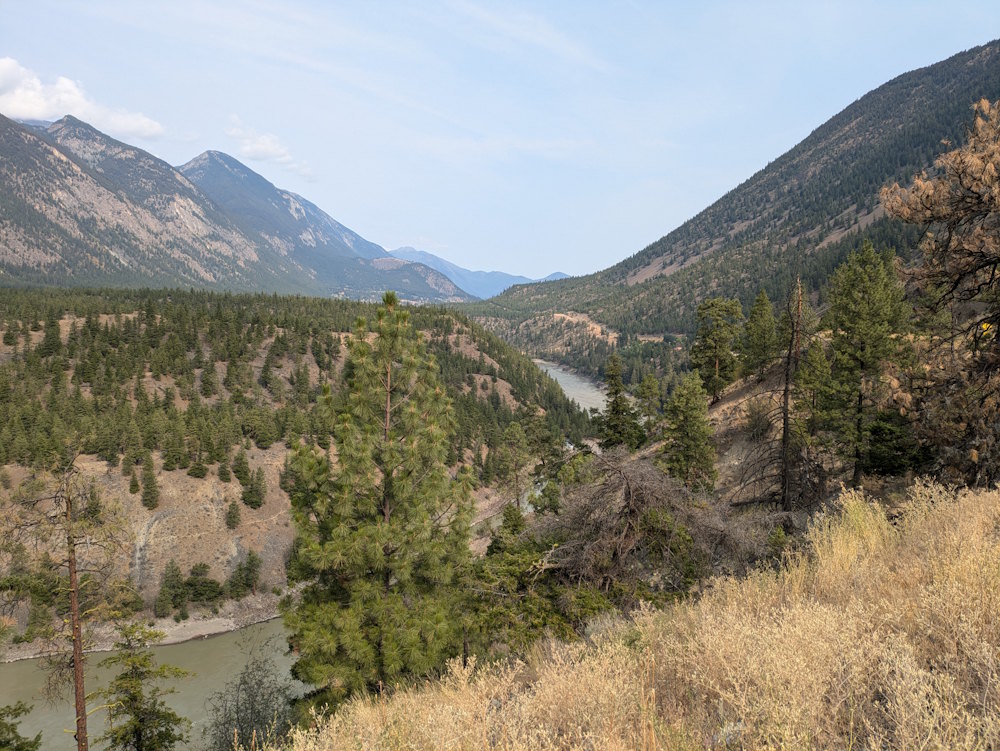
The Fraser is a mighty river and it flows through a fairly substantial valley. Getting down to it will require a short hike, or scramble, down the valley hillside. I wasn’t prepared for this reality, not that it was an overwhelming oversight. Just a friendly reminder that flat maps hide truths.
Our first panning location Lytton Recreational Panning Reserve Site 2 was on a large point bar on the north side of the Thompson River where it enters the Fraser. There is a gravel road down to the bar from the highway but it is blocked at the top by a gate so you cannot drive all the way down. We parked in a rudimentary parking area beside the highway and walked down to the point bar.
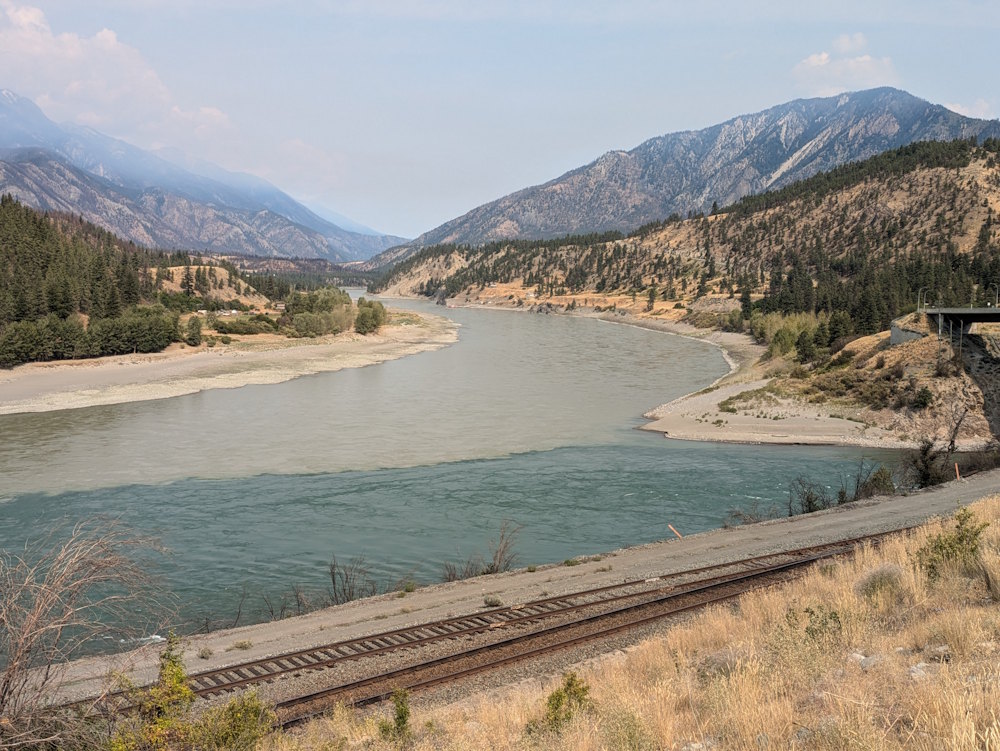
Most of this bar is sandy with some gravel. It is a stark contrast to rocky banks of the Fraser. While there is plenty of black sand, our pans came up empty for gold. Furthermore, we noticed another gold panner working across the Thompson from us. We decided to join them on the assumption they knew what they were doing better than we did.
This southern section of the reserve runs along the east bank of the Fraser and is immediately beneath town. It’s also a tad more difficult to access. There is no road down to the river and a CN rail line cuts along the valley wall which needs to be crossed.
We weren’t sure what to do with this predicament. At the intersection of 6th and Fraser streets, is the entrance to Railway Street which winds down to the CN railyard facilities. At the first switchback is a small offshoot that provides some space for parking. We found another car there and decided it was as good a place as any to park.
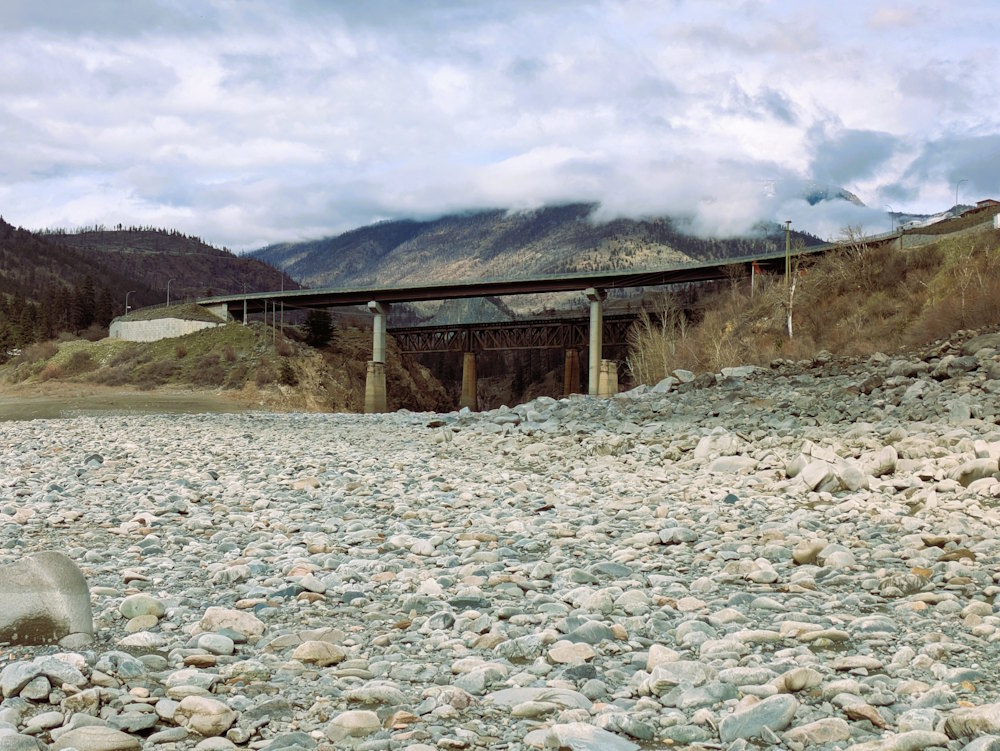
From there, we gathered our gear and scrambled down a section of hill, crossed the railroad tracks, and then followed a footworn trail down the remainder of the valley to the river. This is technically trespassing but CN employees were nowhere to be found and it’s quite evident that others do this regularly.
On maps, particularly satellite maps, you’ll see that River Drive extends south of downtown Lytton and appears to meander all the way down to the river. The road looks narrow, more of a pathway, so I doubt you can literally drive all the way down. But this is an alternative route that will get you to the south end of the panning reserve. It’s possibly easier than the scramble we employed. Perhaps we’ll try this route on our next visit.
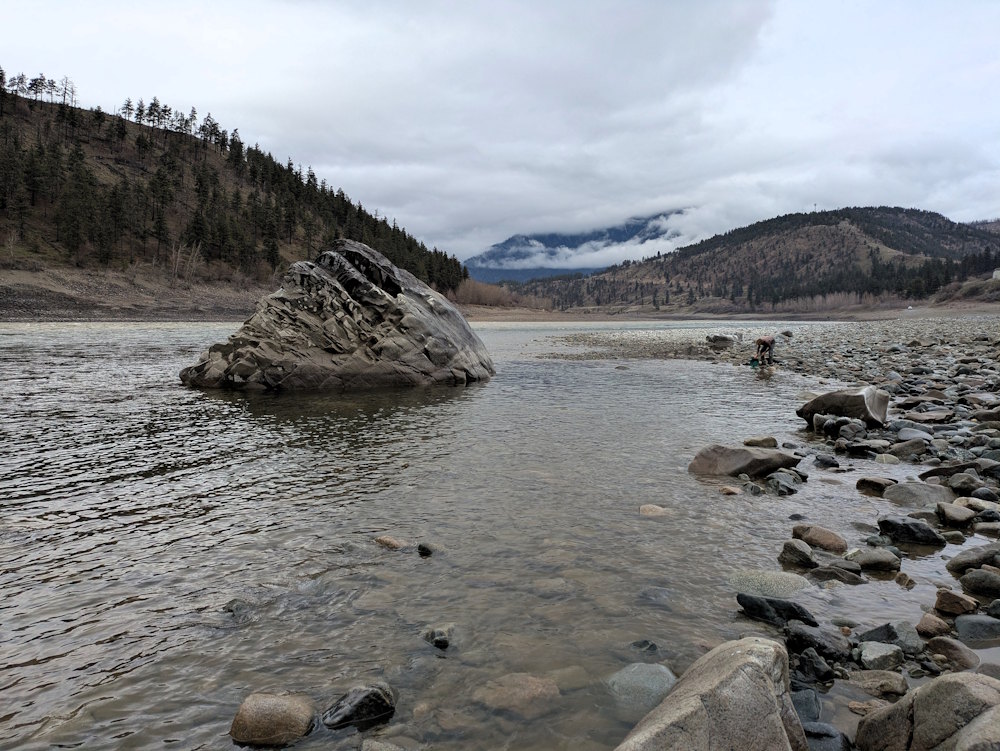
The exposed riverbed here is far rockier than the point bar. The sand and gravel are mixed with every imaginable size of cobble, boulder, and chunks of mountain. This may be great for gold deposition, but it makes for hard digging. You’ll want sturdy shovels and your classifiers.
Not wanting to impinge on our fellow panner’s territory, we chose a spot further south. Almost immediately, we started seeing colour in our pans. As I mentioned, we are pretty new to this hobby so the fairly regular gold in our pans was quite exciting.
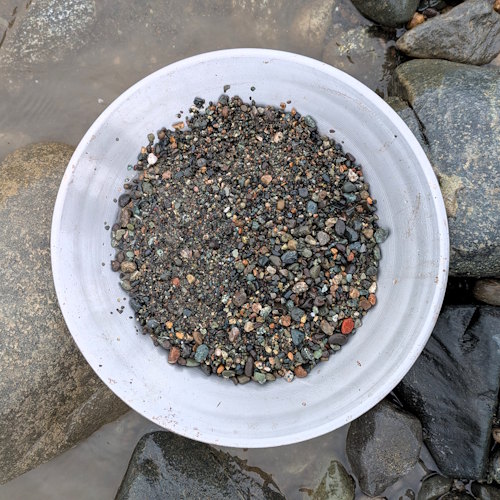
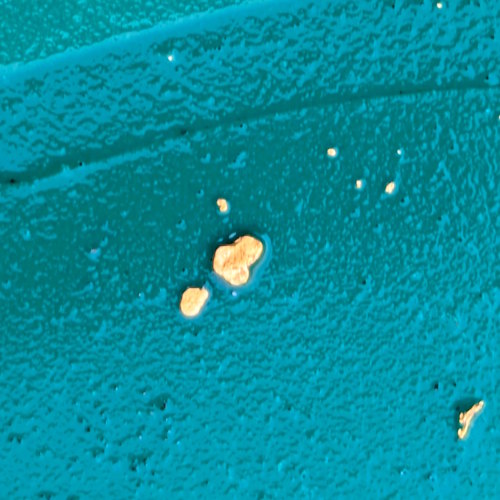
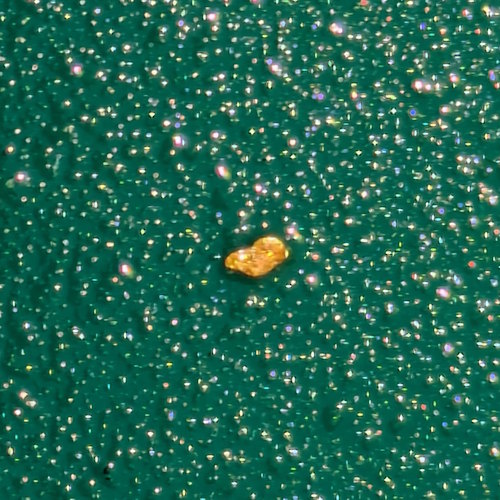
Some of our pans had multiple flecks of gold. This is something we’d never experienced before. Our first ever gold, at Forte Steele, was singular and rare. At Tranquille River in Kamloops, the flakes were bigger and even a nugget was found, but they were never more than three to a pan for us. At Lytton, we had one pan showing perhaps two dozen flakes and specks of gold. This was exhilarating!
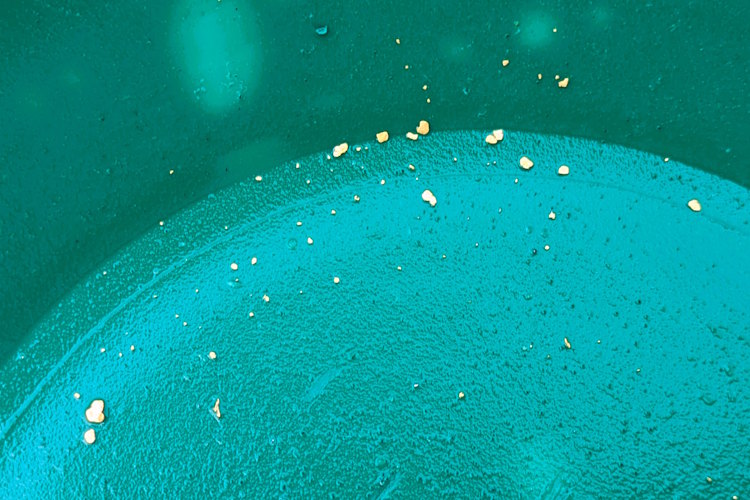
Our first experience at Lytton Recreational Panning Reserve Site 2 was so good that we decided a return visit was in order. This was initially planned for the following summer, but an unexpected snafu over Spring Break had us back in Lytton sooner than expected.
Coming in late March gave us the opportunity to pan with the Fraser at, or near, seasonal lows. We returned to the same spot we’d panned the previous summer, figuring it was best to stick with what worked.
As predicted, there was additional real estate exposed though I’ll admit not as much as I was expecting. Granted, I have no reference to draw upon regarding Fraser River water levels. Regardless, the thought of less regularly panned ground was quite tantalizing.
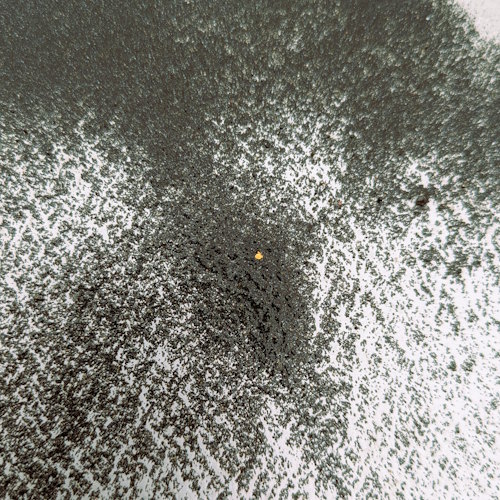
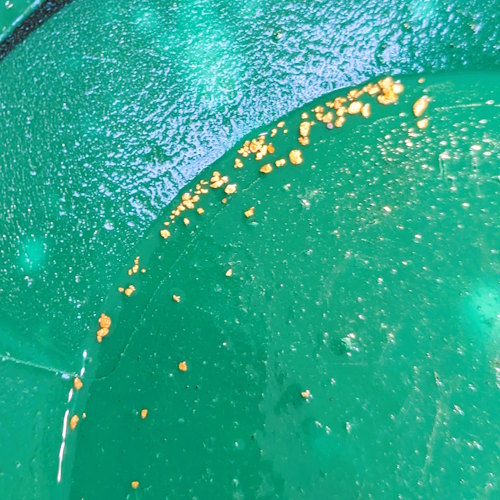
Sadly, this low water land was not nearly as lucrative as I’d hoped. In fact, it was worse than what we had panned in July. Pans were often barren of gold. My son found one sweet spot behind a large rock near the river’s edge, but beyond that this new ground proved disappointing.
By the afternoon, we were back to panning the same band of ground we had panned back in the summer. All we’d managed to do by coming at lowest flow was increase the distance we had to walk to get to the water. With all the rocks and boulders to traverse, this was no small frustration.
Based on our two visits, I would also say there is noticeable stratification in the target detritus. The gold is not on the surface but neither is it deep. You will need to get down a couple inches to start seeing colour but beyond a foot or so down, it will again disappear. This observation is based on a limited data points, so don’t hold it as gospel.
I should also mention that this panning reserve includes the west bank of the Fraser River. There is a massive bar on this west shore at the north end of the reserve across from the point bar I mentioned above. It’s an enticing prospect for sure.
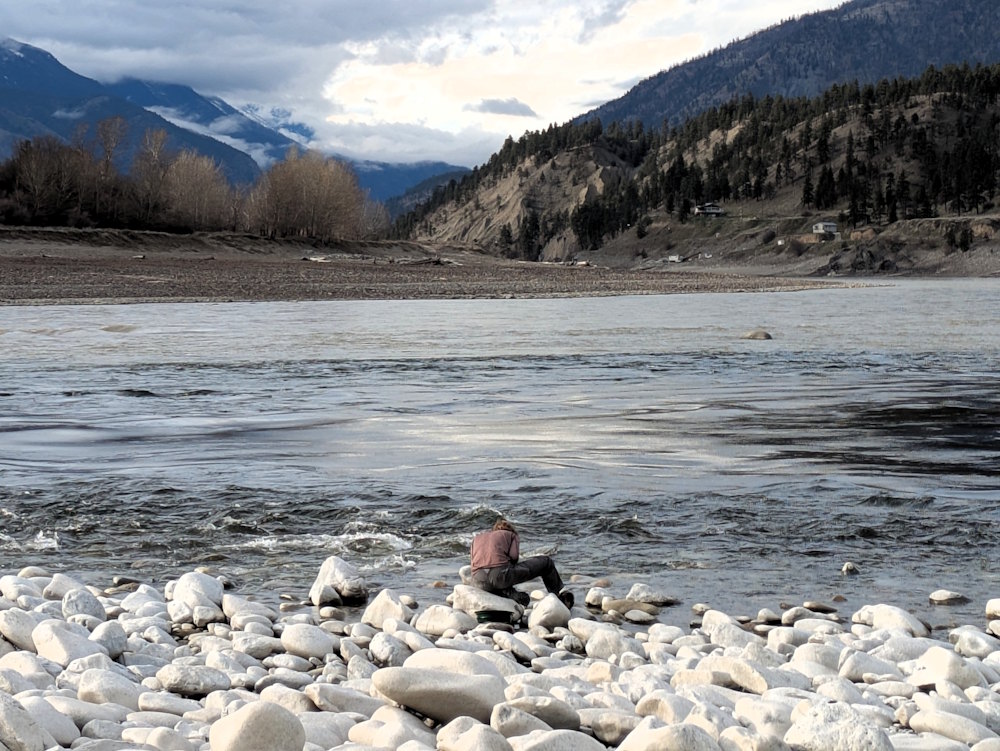
Getting to it, however, is trickier than the east side. There are no highways on that side of the Fraser. No bridges to it either. A small ferry a few hundred metres north of the confluence will get you to the west bank, along with your vehicle, but much of the land appears to be First Nations lands. I feel it’s easier and less intrusive to stick to the east side. Your mileage may vary.
Despite reduced production on our second visit to Lytton Recreational Panning Reserve Site 2, we’ll never hesitate to go panning there. Gold is prevalent and while pickers and nuggets are unlikely, the regular colour and potential for multi-flake/multi-flour pans is too good to ignore.
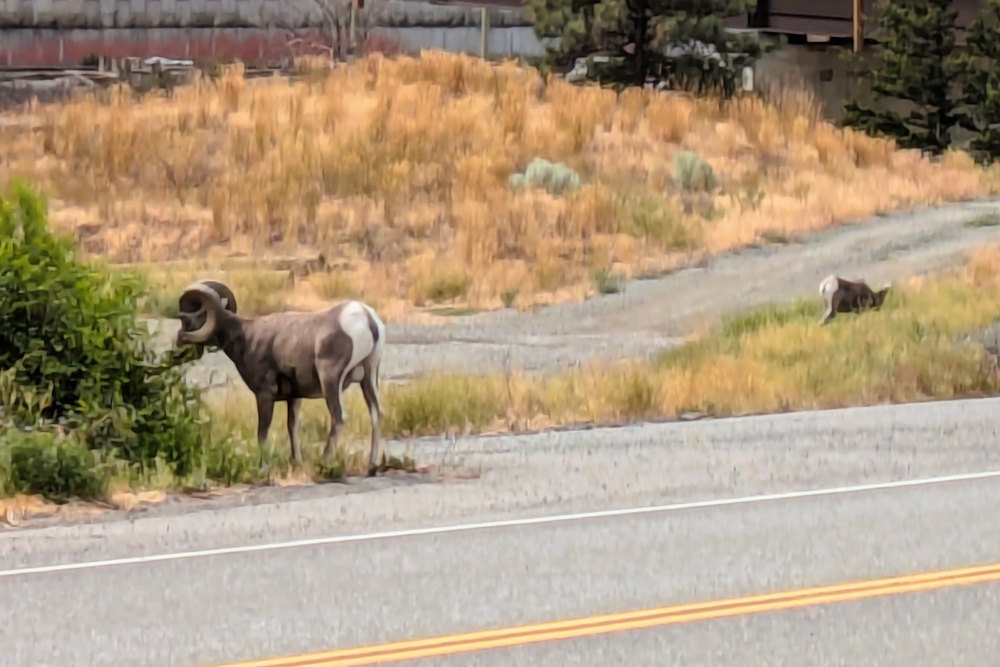
It’s also a beautiful and peaceful place to spend a day panning. Far enough from major population centres that you won’t be overrun by other panners or curious bystanders. Lytton itself is kind of eerie, but the rebuilding that’s happening is also hopeful. The contrast in sediment content between the Fraser River and Thompson River is quite fascinating to see up close.
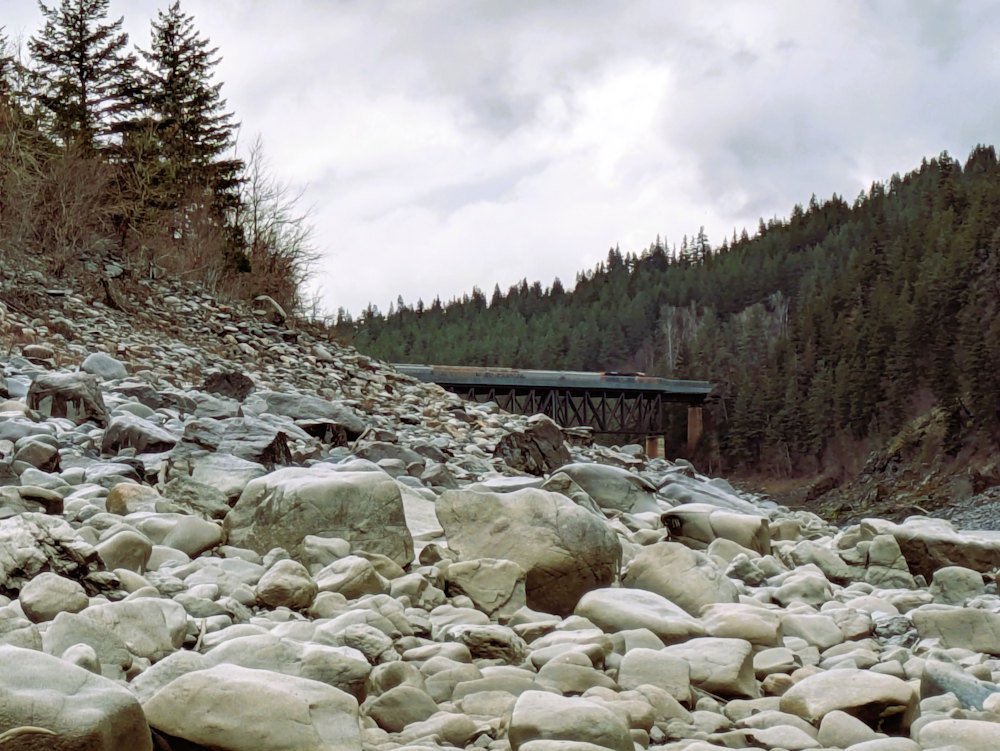
If you’re a train nut, you’ll enjoy regular views of big CN trains passing through. And there’s always a chance you’ll see some wildlife, like the big horn sheep we saw on our first visit. Lytton Recreational Panning Reserve Site 2 is well worth a day trip, or if you’re from afar like us, a multi-day road trip.
If you’re curious about other recreational panning reserves you can try, I recommend looking for options here.

